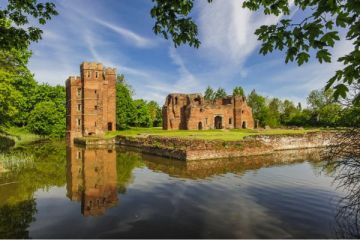UK travel planning tips - suggested holiday itineraries
These suggestions are based on places that my family and I have personally
visited and enjoyed. I've tried to include something for everyone, but
for more suggestions visit the appropriate regional guides by clicking
on the left menu. Get out there and enjoy exploring the UK!
David Ross. Publisher
East
Top Picks: Norfolk Broads and Coast - Cambridge
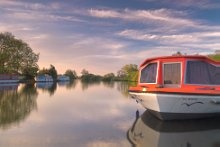
WHAT TO SEE
Broads
The
Norfolk Broads are
best known as a boating centre, and rightly so. They are made
up of a multitude of broad, shallow lakes lying along five major
rivers. The lakes are the result of peat "harvest" during
the Middle Ages. The water level rose, and flooded the peat diggings,
creating lakes that are home to many rare plant and animal species,
as well as a multitude of birds.
Coast
Visit Cromer for a traditional seaside resort,
with the attendant delights of an amusement pier, acres of sand,
and enough ice cream shops to feed the huingry masses. A quieter
and, in my opinion, prettier resort is Mundesley,
just a few miles down the coast.
Walk along the coast near Horsey Mere and you'll usually see colonies
of seals basking in the sun. More in our Norfolk
Travel Guide >>
Where to stay
Self Catering in Norfolk -
Hotels in Norfolk - Wroxham
the capital of the Broads - Bed
& Breakfasts
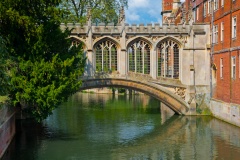
WHAT TO SEE
Cambridge owes its continued popularity as a tourist destination primarily to the presence of the university which bears the city's name. The wonderful medieval architecture of the early colleges that make up the university provide a delightful glimpse of life long ago, and the history that is bound up in those colleges makes for fascinating exploring. The most fasinating of the University buildings is Kings Colege Chapel, created by Henry VII, which must rank as the finest example of Perpendicular Gothic architecture in England, if not the world. The chapel choir is world famous, and if you get a chance to hear a concert in the chapel, sieze it!
The Fitwilliam Museum in Cambridge is one of the finest anywhere, featuring antiquities, applied arts, coins, paintings, and manuscripts. If you're tired to exploring the museum, try punting on the River Cam, or strolling along The Backs, wide lawns that lead from the colleges to the river. See the 'Bridge of Sighs', modelled on the Venetian bridge of the same name, and built without a single nail. Within easy driving distance of Cambridge are the stately home of Wimpole Hall, the Duxford Air Museum, historic Ely, with its medieval cathedral, and the unspoilt nature the East Anglian Fens. More in our Cambridge Travel Guide >>
Where to stay
Hotels - Bed
and Breakfasts
West
Top Picks:Mendip Hills - Exmoor
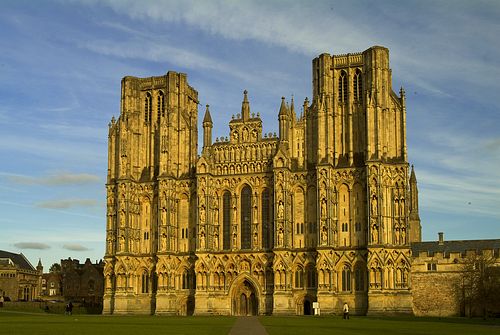
WHAT TO SEE
The Mendip Hills are a high limestone ridge in northeast Somerset. The geloogy of the hills has led to numerous large caves, including the most famous at Cheddar Gorge, where the showcaves welcome visitors fom across the globe. Less crowded, but also very impressive, are the Wooky Hole showcaves near Wells. Aside from those cave-riddled hills, the region extends to include the marshy lowland of the Somerset Levels and the nearby towns and villages of Glastonbury, Wells, and Frome.
Wells is the smallest city in England, and boasts a fabulous medieval cathedral, and a preserved 14th century street. Near the cathedral is the moated palace of the powerful Bishops of Bath and Wells. At Glastonbury the ruins of Glastonbury Abbey slumber beneath mystical Glastonbury Tor, which offers fantastic views over the Somerset Levels. For actiities, try cycling the Levels; there are plenty of quiet lanes, and as the name suggests, there are few hills to climb! More on Mendip Hills - Wells - Glastonbury >>
Where to stay
Hotels in Glastonbury
- Wells - Frome
- Cottages in Wells - Frome
- Bed
& Breakfasts
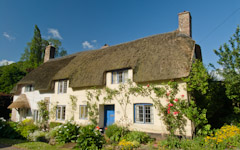
WHAT TO SEE
Exmoor is home to some of the most varied and beautiful scenery in England. The moors contain large deposits of peat, which form bogs due to the high rainfall. Mist and fog can descend very quickly in Exmoor, so a compass is a must for walkers. The peat moors give way to heather uplands, replete with a variety of grasses and plants, such as gorse and whortleberry.
Wild Exmoor ponies still graze here side by side with red deer, the largest of England's native animals.The lush green coombes, dominated by oak woods, are home to a variety of bird life, such as grey wagtails, kestrels, buzzards and ring ouzels. On the western vere of Exmoor is Lynton, a lovely old village joined by a cliff railway with neighbouring Lynmouth. On the eastern edge is pretty Dunster, with a beautiful castle perched on a high hill above the village. The coastal road is one of the most beautiful in England, but turn off the road at Oare to find mystical Doone Country, inspiration for RD Blackmore's enduring romance Lorna Doone. More about Exmoor >>
Where to stay
Hotels in Lynmouth -
Dunster - Bed
& Breakfasts - Cottages - Somerset Cottages - Devon
North
Top Picks: Isle of Skye - Lake District

WHAT TO SEE AND DO
The Cuillin Hills offer the highest concentration of Munros (mountain peaks over 3000 feet) in Scotland - a paradise for walkers. If you don't feel energetic, take a cruise into the heart of the Cuillins from the lovely fishing village of Elgol. The Trotternish peninsula is home to the fabulous geological formations of the Quiraing, an otheworldly landscape formed by volcanic action long ago.
See Dunvegan Castle, home of Clan MacLeod, and see the fabled Fairy Flag, or take a short boat journey into Dunvegan Loch to see the resident seal colony at rest. I could go on and on; Skye is like a breath of fresh air if you've had enough of city life. More in our Isle of Skye Travel Guide >>
Where to stay
Self catering
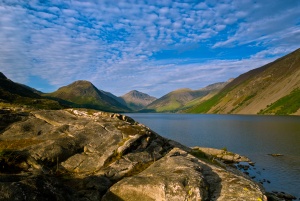
WHAT TO SEE
Cumbria is one of England's most visited regions - for good reason. Much of this hilly region of north-west England is included in the Lake District National Park. This largest of England's National Parks provides an exciting mix of mountain and lake scenery. Postcard-perfect in summer, in fall the brown bracken of the mountain slopes contrasts with the reds of oak forests and the beginnings of snow-white frosting on the mountain peaks. The Lake District is a walker's paradise at any time.
Take a steam-driven gondola trip on Coniston Water, or climb Hardknott Pass to the old Roman military fort for fabulous views. Visit Dove Cottage, where poet William Wordsworth lived, or Hill Top, home of children's auther Beatrix Potter. There's so much to se in the Lakes, and such a lot of activities to choose from, you can't go wrong making this area your destination. Though the region draws heavy crowds in the summer months, there are thankfully so many quiet backwaters that you are sure to find somewhere peaceful at any time of year. See our Lake District Travel Guide for more >>
Where to stay in the Lake District
Hotels - Bed
& Breakfasts - Cottages
South
Top Picks: Winchester - Isle of Wight
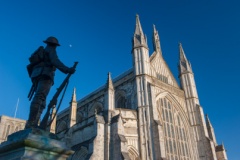
WHAT TO SEE
Looking for a city break, with not much driving to do? The city of Winchester is beautiful and compact, cramming a remarkable collection of historical buildings into a small area. The prize of Winchester is the cathedral, one of the finest examples of Gothic architecture in the country. Such was Winchester's importance in the Middle Ages that the cathedral was used as many as three times a year for royal court functions. In the presbytery there are mortuary chests containing the bones of Saxon kings and bishops.
Winchester Castle holds a prominent position in English history. It was built in 1067, within a year of the Norman Conquest. Within the great hall of the castle is a huge round table, once thought to be the famous round table of Arthurian legend, now known to be a Tudor invention. Wnchester is blessed with a wonderful variety of old buildings, the ruins of a medieval bishop's palace, a medieval abbey, a house once lived in by Jane Austen, and so much more. See our Winchester Travel Guide for more >>
Where to stay
Hotels in Winchester
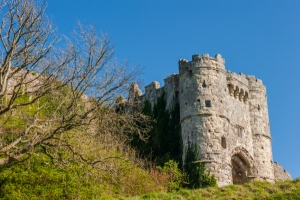
WHAT TO SEE
Located just four miles off the Hampshire coast, the Isle of Wight has been drawing visitors from the mainland for centuries, but interest really picked up since Queen Victoria made it her "home away from home". Indeed, the major tourist draw is Victoria's own Osborne House, the fanciful Italianate mansion designed between 1845-1850 by Prince Albert as a retreat for the royal couple. If the Victorian era is too recent foir you, see historic Carisbrook Castle, where Charles I was held prisoner before his final journey to London and execution.
Most areas of the island still maintain an air of calm, and provide ample opportunities for outdoor pursuits such as walking and cycling. A cycle path circles the entire island, and a network of walking trails combine to offer excellent recreational strolls. More in our Isle of Wight Travel Guide >>
Where to stay on the Isle of Wight
Hotels - Bed
& Breakfasts - Cottages
